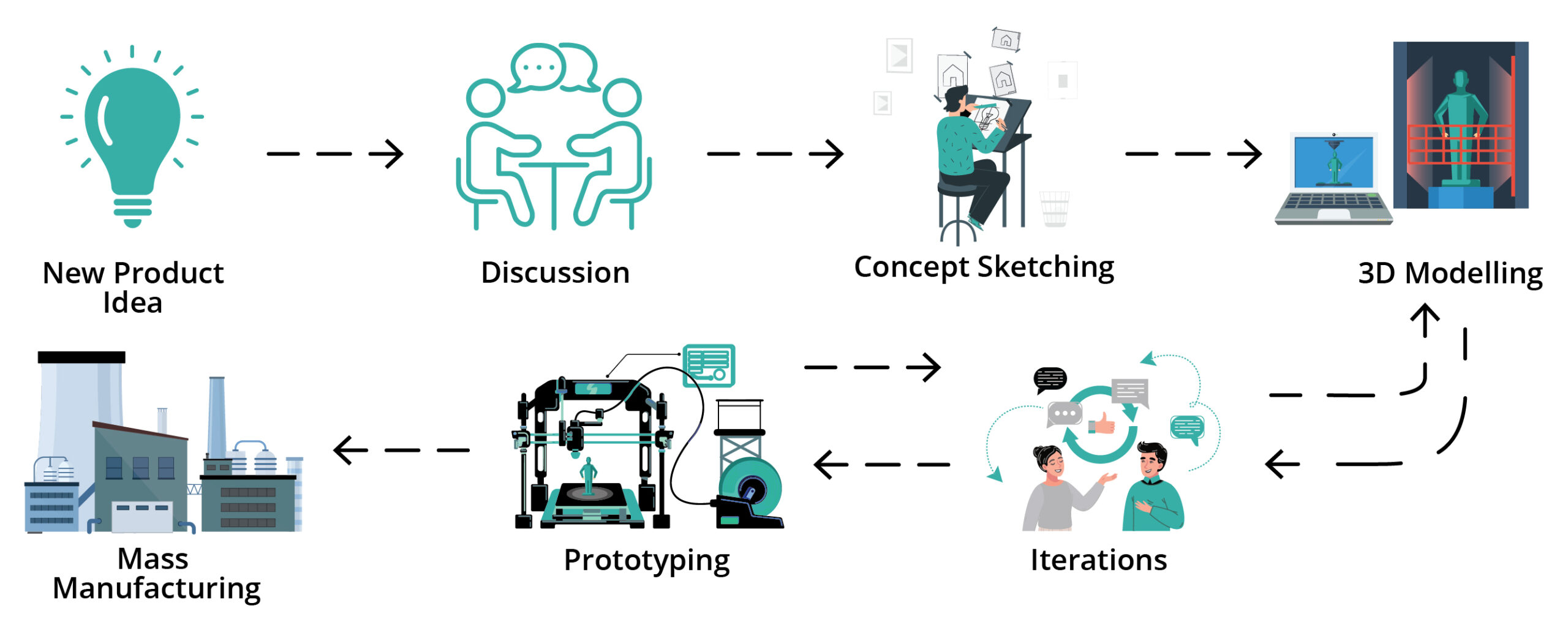3D product design has transformed traditional manufacturing, merging creativity with technology to turn complex ideas into tangible realities. This revolutionary approach accelerates prototyping, enhances precision, and fosters innovation, reshaping industries from automotive to healthcare. In this exploration, we delve into how 3D design has redefined the production landscape, making the once impossible, possible.
Understanding 3D Product Design
3D product design merges imagination with technology, using Computer-Aided Design (CAD) to create detailed, interactive models. This process not only expedites design and manufacturing but also enhances product functionality, allowing for sophisticated, precise creations across various industries.
Key Technologies in 3D Product Design
In the realm of 3D product design, several pivotal technologies play crucial roles:
- Computer-Aided Design (CAD) Software: The linchpin of 3D design, CAD software, like Autodesk Fusion 360 or SolidWorks, enables designers to create and manipulate complex 3D models. These tools offer a sandbox for innovation, allowing for the design of intricate parts and assemblies with high precision.
- 3D Printing: Often synonymous with 3D design, 3D printing technology brings digital models into the physical world. Technologies like Fused Deposition Modeling (FDM), Stereolithography (SLA), and Selective Laser Sintering (SLS) cater to different materials and resolution requirements, broadening the scope of what can be manufactured.
- Simulation and Analysis Tools: Virtual testing of designs is made possible with simulation software, which can predict how a product will behave under various conditions. These tools assess factors like strength, aerodynamics, and thermal performance, ensuring the design is both functional and robust.
- Collaborative Platforms: The design process often involves teams spread across different locations. Collaborative platforms integrated with CAD software enable real-time sharing and editing of 3D models, facilitating seamless teamwork and faster iteration.
- Advanced Materials: The evolution of materials used in 3D printing, such as composites, metals, and bio-compatible substances, has expanded the horizons of product design, allowing for the creation of more durable and complex products.
Impact of 3D Product Design on Various Industries

3D product design has revolutionized industries across the board, from automotive to healthcare, by enabling faster innovation, reducing costs, and allowing for more complex and customized products.
- Automotive: In the automotive sector, 3D design has accelerated the development of new vehicles by enabling rapid prototyping of complex parts. This leads to shorter product cycles and more innovative features in cars.
- Aerospace: The aerospace industry benefits from 3D design by producing lighter and stronger components. This has significant implications for fuel efficiency and the overall performance of aircraft.
- Consumer Goods: For consumer goods, 3D design has opened the door to mass customization, allowing products to be tailored to individual preferences without significant cost increases.
- Healthcare: In healthcare, 3D design is used to create custom prosthetics and implants, improving patient outcomes and reducing recovery times.
The Process of 3D Product Design

The 3D product design process transforms initial concepts into functional, manufacturable products through a series of methodical steps:
- Conceptualization: It all starts with an idea. This phase involves brainstorming, sketching, and discussing to define the product’s purpose, appearance, and functionality.
- 3D Modeling: Using CAD software, designers create detailed 3D models of the product. This step converts sketches into precise digital representations, laying the groundwork for prototyping and production.
- Simulation and Analysis: Before physical prototypes are made, the design undergoes virtual testing. Simulation tools assess the product’s performance under various conditions, allowing designers to refine and optimize the model.
- Prototyping: With 3D printing or other rapid prototyping methods, physical samples of the design are produced. These prototypes are essential for evaluating the look, feel, and function of the product in the real world.
- Refinement: Based on feedback from testing and analysis, the design is tweaked and improved. This iterative process continues until the product meets all the required specifications and performance standards.
- Preparation for Manufacturing: Once the design is finalized, it’s prepared for mass production. This involves detailed planning for manufacturing processes, materials, and quality control.
- Launch and Production: With everything in place, the product goes into production. The 3D design files guide the manufacturing equipment, ensuring each unit is produced accurately according to the design specifications.
Conclusion
3D product design has revolutionized manufacturing, blending creativity with precision to streamline production and inspire innovation. As a pivotal force in modern industry, it continues to evolve, pushing boundaries and transforming ideas into reality, proving its enduring impact and shaping the future of design and manufacturing.







